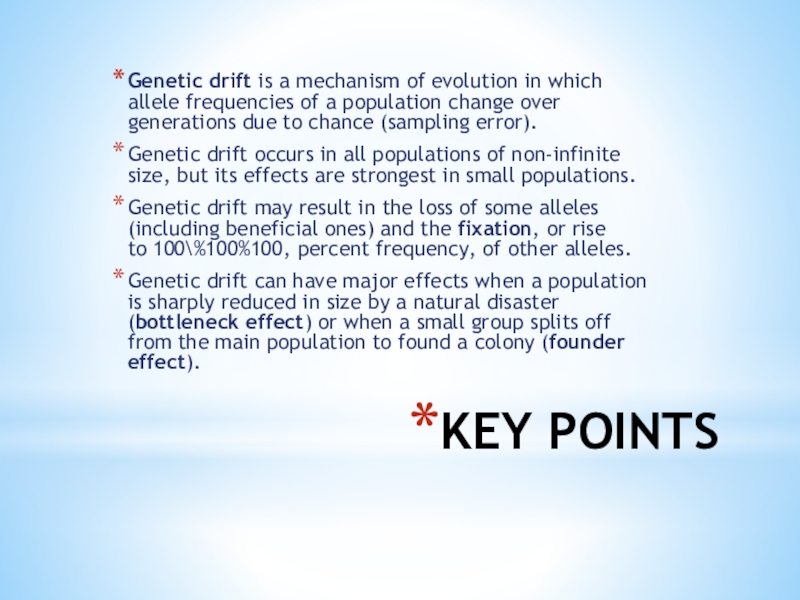frequencies of a population change over generations due to chance
(sampling error).Genetic drift occurs in all populations of non-infinite size, but its effects are strongest in small populations.
Genetic drift may result in the loss of some alleles (including beneficial ones) and the fixation, or rise to 100\%100%100, percent frequency, of other alleles.
Genetic drift can have major effects when a population is sharply reduced in size by a natural disaster (bottleneck effect) or when a small group splits off from the main population to found a colony (founder effect).





![dhruv 1 The role of random chance in evolution was first outlined by The role of random chance in evolution was first outlined by Hagedoorn and Hagedoorn in 1921 [47]. They](/img/tmb/7/624154/982f9ac9562a95fa246320a192a73a93-800x.jpg)


































